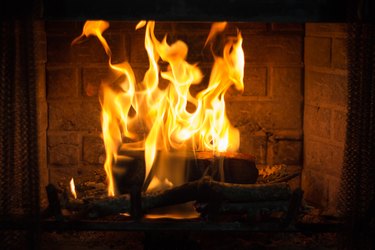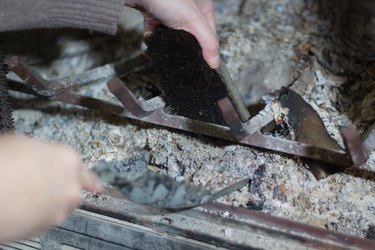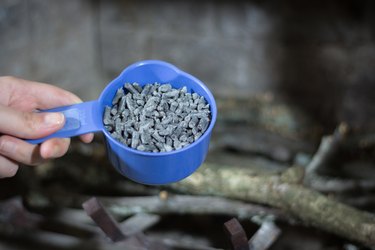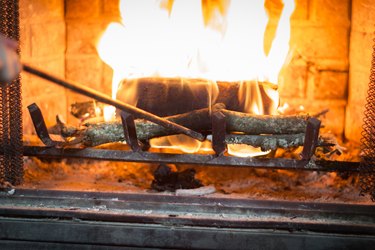Things You'll Need
Chunk or pellet anthracite coal
Newspaper
6 to 12 pieces of dry kindling wood, 6 to 12 inches long

You can't burn coal in just any fireplace; coal requires more careful handling and more exacting ventilation than wood. If you have a working Rumford-style coal fireplace and the right fixtures, you're set. Otherwise, check with an expert to ensure your fireplace is coal-compatible.
Step 1

Open the fireplace damper.
Video of the Day
Step 2

Sweep the floor of the firepit completely clean. Crumple one or two sheets of newsprint and tuck them under the grate.
Step 3

Arrange kindling pieces across the grate so they touch each other.
Step 4

Put two to four fist-sized chunks, or 2 cups of pellets, over the kindling, and light the paper.
Step 5

Watch the fire carefully, moving kindling or coal pieces around as needed till the bottom of the coal pieces ignite.
Step 6

Add small amounts of coal to keep the fire going, but do not crowd the grate. Stop adding coal 60 to 90 minutes before you want the fire to extinguish on its own. Leave the damper open to let it burn completely out. Remove ashes and unburned coal only when you know they are completely cold.
Tip
Purchase anthracite or hard coal to burn in a fireplace, either in small chunks or in pellets that you can also use in a coal stove. Anthracite burns with much less dust, smoke and oily residue than bituminous or soft coal, and with a bright, clear, durable, hot flame.
Your fire grate should be suited for coal; hardware mesh modified to seat on top of a larger grate stabilizes fires for beginners and keeps pellets from falling unburned through the bars. Hardware cloth will need periodic replacement because of the heat of the fire.
Air circulating under the grate promotes hot, thorough combustion.
Warning
Carbon dioxide, carbon monoxide and sulfuric acid are natural byproducts of combustion of fuels like oil, wood, coal, kerosene and charcoal. Adequate ventilation limits risk of irritating and poisonous effects. Coal and charcoal, because of their slow burning rates, require high levels of ventilation for safe home use. Poor ventilation produces incomplete combustion, raising the amounts of carbon dioxide and carbon monoxide generated. If your fireplace is fitted with doors, don't close them when burning coal.
Make it a practice to use fireproof gloves for all stages of building the fire to prevent accidental burns.
Video of the Day
- Oswego County: Safety Tips for Coal and Wood Burning Stoves
- The New York Times: Burning Coal at Home Is Making a Comeback
- International Council of Building Officials: Rumford Fireplaces
- Pennsylvania Office of the State Fire Commissioner: Carbon Monoxide Poisoning Prevention and Alarm Calls
- This Old House: One Hot Fireplace
- Yankee Magazine: Rumford Fireplace: Lord of the Flues
- Old House Web: Count Rumfords Legacy
- Direct Metals: Wire Cloth Catalog